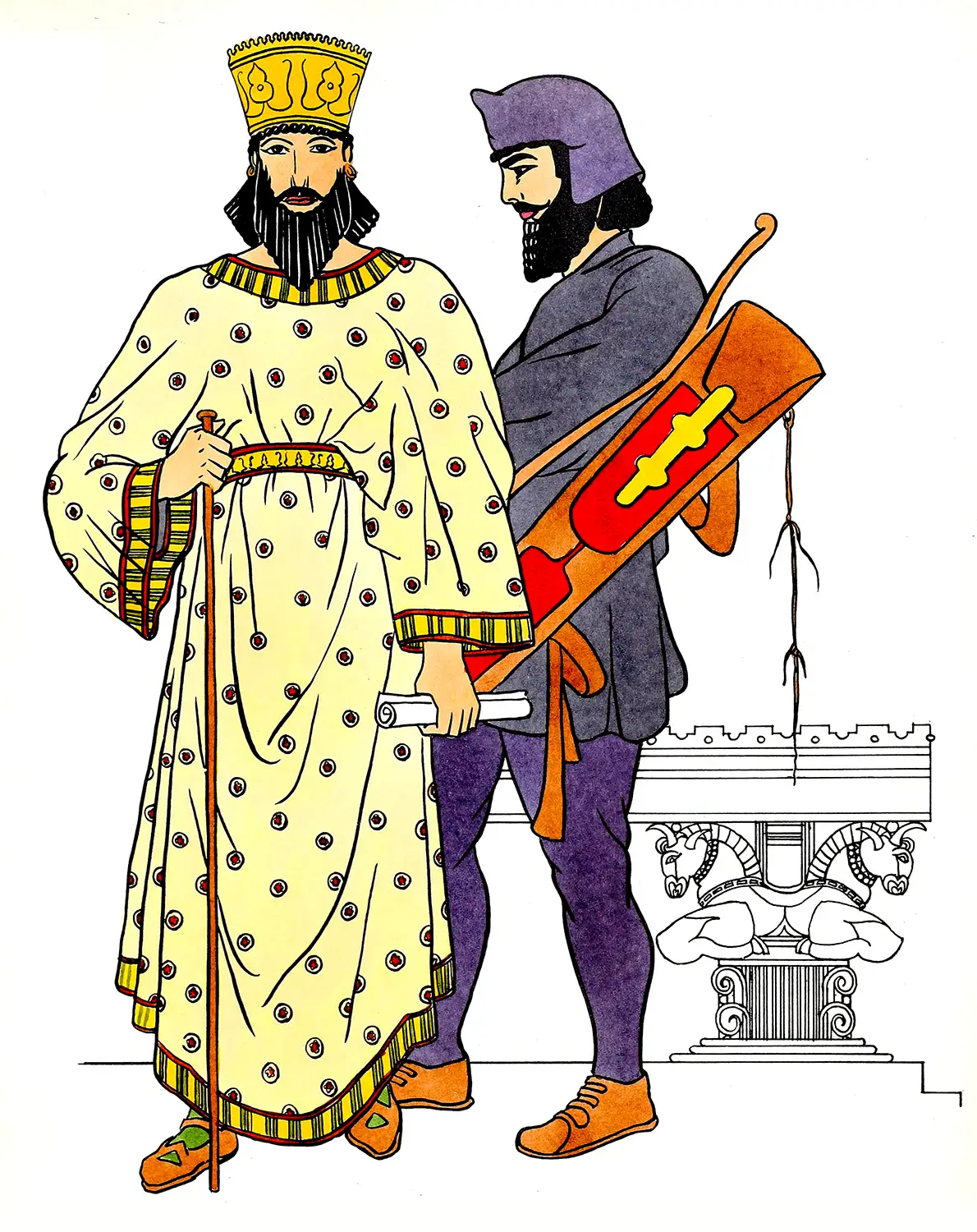BYZANTINE PLATE NO. 20

Byzantine King and Queen. 4th-11th century
The two figures shown here represent several new varieties of Byzantine costume.
The man is wearing a crown which, like the one on Plate 19, is really an outgrowth of the fillet. It is a jeweled gold band und has the usual pearl strands hanging over the ears. His tunic is a typical garment worn by younger men of the times. In length it comes to, or a little below, the knee. It is split up almost to the waist on either side of the skirt. These slits are usually trimmed with heavy embroidery. The neck and the shoulders are also beautifully embroidered, and the center of the skirt is ornamented with circular bit of decoration known as segmentae. The tunic is girdled with a thong or ribbon of some sort.
On his legs he is wearing the hosa or stocking. Very probably they are gartered up under the tunic. They were probably cut to fit the leg and carefully tailored. Modern tights would give the same effect. The shoes are simple in design and made either of soft leather or cloth. His cloak is a voluminous rectangular piece of wool made ornate with a red lining to suit the tastes of the times, and with a pearl trimmed brooch and two square insets of embroidery or patterned material. These insets were called tablions and, along with the segmentae, are the most typical of Byzantine costume decoration.
The woman is wearing the same type of tunic as the man. Notice, however, its great or length, the jeweled bolt, and the lack of segmentae, She, too, is wearing a cloak, somewhat smaller than the man’s and without the tablions, which seem to have been restricted to the men’s cloaks.
Her hair has been done up in an Oriental manner and trimmed with pearl strands. On top of the thick roll of hair she has poised a small gold crown. The long strands of jewels, hanging over her shoulders, can be either earrings or part of her headdress. Over her ensemble she has put on the heavy jeweled collar. Notice her bracelets and the lavish use of jewelry, rich colors, and stiff formal materials.
Byzantine dress is Oriental, heavy, and very formal. Deep colors and rich materials give a wealth and grandeur to the costume that not many other periods can match.
History of Costume.
Source: Museum Extension Project.
Related
Discover more from World4 Costume Culture History
Subscribe to get the latest posts sent to your email.






